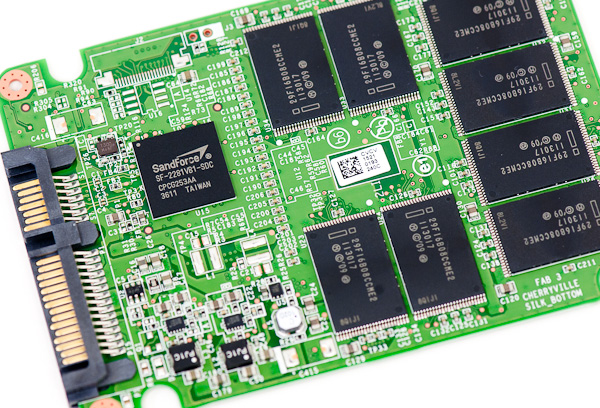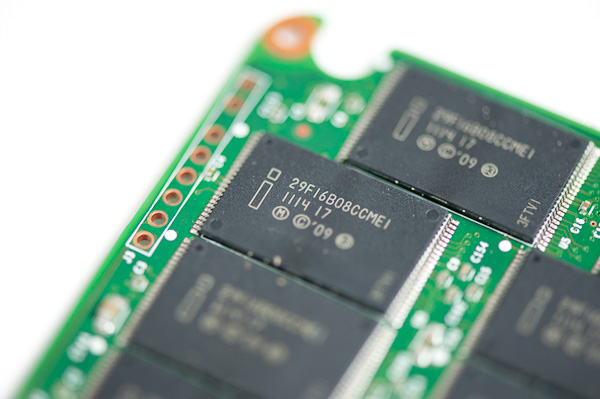A Look at Enterprise Performance of Intel SSDs
by Anand Lal Shimpi on February 8, 2012 6:36 PM EST- Posted in
- Storage
- IT Computing
- SSDs
- Intel
Final Words
The X25-E remains one of the fastest Intel SSDs in the enterprise despite being three generations old from a controller standpoint. The inherent advantages of SLC NAND are undeniable. Intel's SSD 520 regularly comes close to the X25-E in performance and easily surpasses it if you've got a 6Gbps interface. Over a 3Gbps interface, most of these drives end up performing very similarly.
We also showed a clear relationship between performance and drive capacity/spare area. Sizing your drive appropriately for your workload is extremely important for both client and enterprise SSD deployments. On the client side we've typically advocated keeping around 20% of your drive free at all times, but for enterprise workloads with high writes you should shoot for a larger amount. How much spare area obviously depends on your workload but if you do a lot of writing, definitely don't skimp on capacity.
What's most interesting to me is that although the 520 offers great performance, it didn't offer a tremendous advantage in endurance in our tests. Its endurance was in line with the SSD 320, if not a bit lower if we normalize to capacity. Granted this will likely vary depending on the workload, but don't assume that the 520 alone will bring you enterprise class endurance thanks to its lower write amplification.
This brings us to the final point. If endurance is a concern, there really is no replacement for the Intel SSD 710. Depending on the workload you get almost an order of magnitude improvement in drive longevity. You do pay for that endurance though. While an Intel SSD 320 performs similarly to the 710 in a number of areas, the 710 weighs in at around $6/GB compared to sub-$2/GB for the 320. If you can get by with the consumer drives, either the 320 or 520, they are a much better solution from a cost perspective.
Intel gives you the tools to figure out how much NAND endurance you actually need, the only trick is that you'll need to run your workload on an Intel SSD to figure that out first. It's a clever way to sell your drives. The good news is that if you're moving from a hard drive based setup you should be able to at least try out your workload on a small number of SSDs (maybe even one if your data isn't too large) before deciding on a final configuration. There are obviously software tools you can use to monitor writes but they won't give you an idea of write amplification.












55 Comments
View All Comments
Anand Lal Shimpi - Thursday, February 9, 2012 - link
Given enough spare area and a good enough SSD controller, TRIM isn't as important. It's still nice to have, but it's more of a concern on a drive where you're running much closer to capacity. Take the Intel SSD 710 in our benchmarks for example. We're putting a ~60GB data set on a 200GB drive with 320GB of NAND. With enough spare area it's possible to maintain low write amplification without TRIM. That's not to say that it's not valuable, but for the discussion today it's not at the top of the list.The beauty of covering the enterprise SSD space is that you avoid a lot of the high write amp controllers to begin with and extra spare area isn't unheard of. Try selling a 320GB consumer SSD with only 200GB of capacity and things look quite different :-P
Take care,
Anand
Stuka87 - Wednesday, February 8, 2012 - link
Great article Anand, I have been waiting for one like this. It will really come in handy to refer back to myself, and refer others too when they ask about SSD's in an enterprise environment.Iketh - Thursday, February 9, 2012 - link
Anand's nickname should be Magnitude or the OOM Guy.wrednys - Thursday, February 9, 2012 - link
What's going on with the media wear indicator on the first screenshot? 656%?Or is the data meaningless before the first E4 reset?
Kristian Vättö - Thursday, February 9, 2012 - link
Great article Anand, very interesting stuff!ssj3gohan - Thursday, February 9, 2012 - link
So... something I'm missing entirely in the article: what is your estimate of write amplification for the various drives? Like you said in another comment, typical workloads on Sandforce usually see WA < 1.0, while in this article it seems to be squarely above 1. Why is that, what is your estimate of the exact value and can you show us a workload that would actually benefit from Sandforce?This is very important, because with any reliability qualms out of the way the intel SSD 520 could be a solid recommendation for certain kinds of workloads. This article does not show any benefit to the 520.
Christopher29 - Thursday, February 9, 2012 - link
Members of this forum are testing (Anvil) SSDs with VERY extreme workloads. X25-V40GB (Intel drive) has already 685 TB WRITES ! This is WAY more than 5TB suggested by Intel. They also fill drives completely! This means that your 120GB SSDs (limited even to 100GB) could withstand almost 1 PB writes. One of their 40GB Intel 320 failed after writting 400TB!Corsair Force 3 120GB has already 1050TB writes! You shoul reconsider your assumptions, because it seems that those drives (and large ones especially) will last much longer.
Stats for today:
- Intel 320 40GB – 400TB (dead)
- Samsung 470 64GB – 490TB (dead)
- Crucial M4 64GB – 780TB (dead)
- Crucial M225 60GB – 840TB (dead)
- Corsair F40A - 210TB (dead)
- Mushkin Chronos Deluxe 60GB – 480TB (dead)
- Corsair Force 3 120GB – 1050TB (1 PB! and still going)
- Kingston SSDNow 40GB (X25-V) (34nm) - 640TB
SOURCE:
http://www.xtremesystems.org/forums/showthread.php...
Christopher29 - Thursday, February 9, 2012 - link
PS: And also interestingly Force 3 (that lasted longest) is exactly SF-2281 drive? So what is it in reality Anand, does this mean that SF do write less and therefore SSD last longer?Death666Angel - Thursday, February 9, 2012 - link
In every sentence, he commented how he was being conservative and that real numbers would likely be higher. However, given the sensitive nature of business data/storage needs, I think most of them are conservative and rightly so. The mentioned p/e cycles are also just estimates and likely vary a lot. Without anyone showing 1000 Force 3 drives doing over 1PB, that number is pretty much useless for such an article. :-)Kristian Vättö - Thursday, February 9, 2012 - link
I agree. In this case, it's better to underestimate than overestimate.